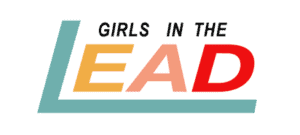Becoming mainstream and incorporating gender focused language and programs into your communities can be difficult if your organization doesn’t understand some of the key parts that go into planning. This post and others in its series are dedicated to breakdown some of the terms Girls in the Lead Modules use, so everyone can have a clear understanding; there are definitions of the bolded terms at the end of the blog.
What are Gender and Gender Lens?
Gender is the cultural understanding of roles, likes and dislikes, and identity. It differs from biological sex, which is determined based only on physical sex characteristics. A gender lens is looking at problems and developing programs that address gender stereotypes along a spectrum (transgender, gender-neutral, genderqueer, etc) versus a binary (male and female). Our Programming and Organizational Structure Modules provide resources in assessing your organization in various aspects such as gender.
What is the Whole Point?
Being able to understand the gender-specific needs in your community creates impactful change that lasts long after the work has been done. Different gender-specific needs that occur within communities are limited gender-neutral sports teams and public facilities like bathrooms, a predominant language, and culture that consists of the binary and stereotypes i.e. girls should stay inside, cooking and cleaning; boys go outside and work. These needs play a major role in gender inequality and negatively impact girls, women, and non-binary individuals.
What Happens Next?
Empowering everyone in the community no matter what they identify as helps the world move towards equity and value for all. It builds a new generation of socially resilient, educated, and economically independent members of society. Although gender empowerment often comes with empowering those who need the support, men and boys can use their privilege to advocate for those with less privilege and be engaged to promote and support gender equity. Boys and men are also needed to discuss masculinity and its narrative in gender empowerment.
Make sure to check out our Module 1 dedicated to Gender that utilizes these terms and gives more information on the impact and needs of a gender-based language in your community
Definitions:
- Binary: classification of gender into two distinct, opposite forms of masculine and feminine, whether by a social system or cultural belief
- Gender-neutral: having no specific gender identity or having a gender identity that is neutral
- Genderqueer: someone who identifies with neither, both, or on a spectrum of male and female
- Masculinity: a set of attributes, behaviors, and roles associated with boys and men
- Non-binary: the umbrella term covering all gender identities and expressions outside the gender binary
- Privilege: a system of advantages or rights that are available solely based on sex
- Transgender: people whose gender identity or gender expression differ from the sex assigned at birth
What other gender definitions/language are you aware of? Tell us in the comments 🙂
By Ola Adebayo – GIL Team Member
